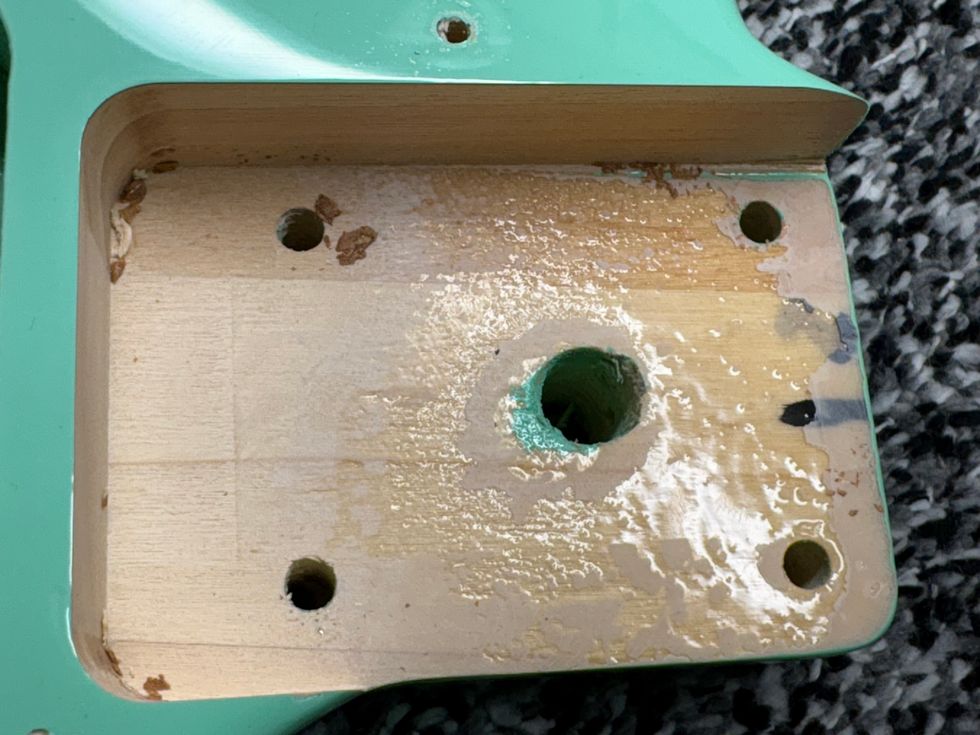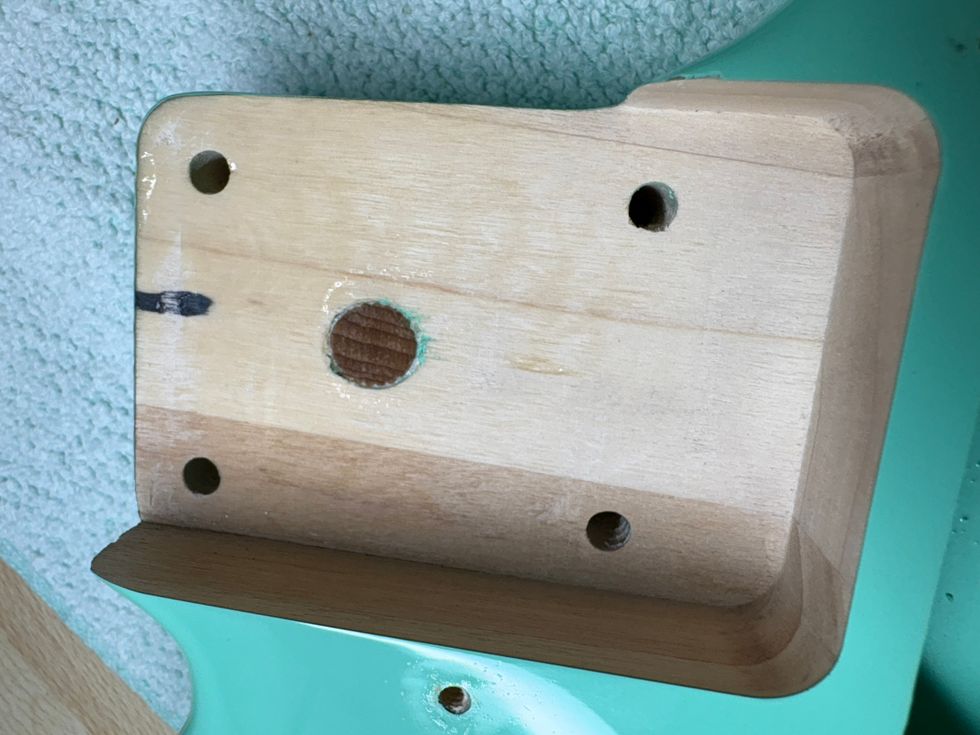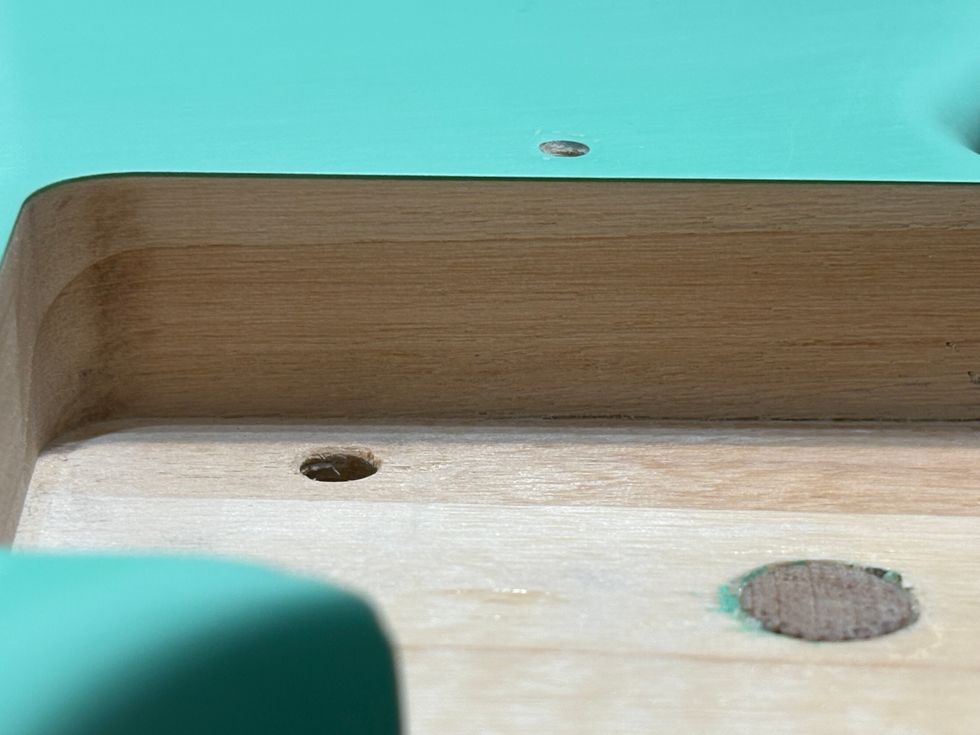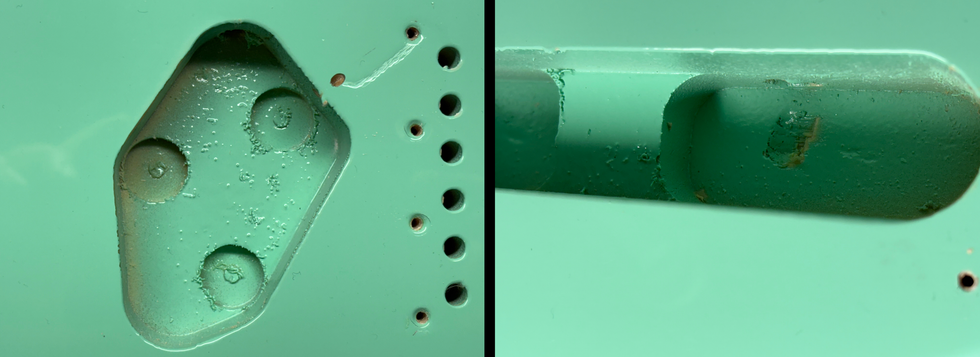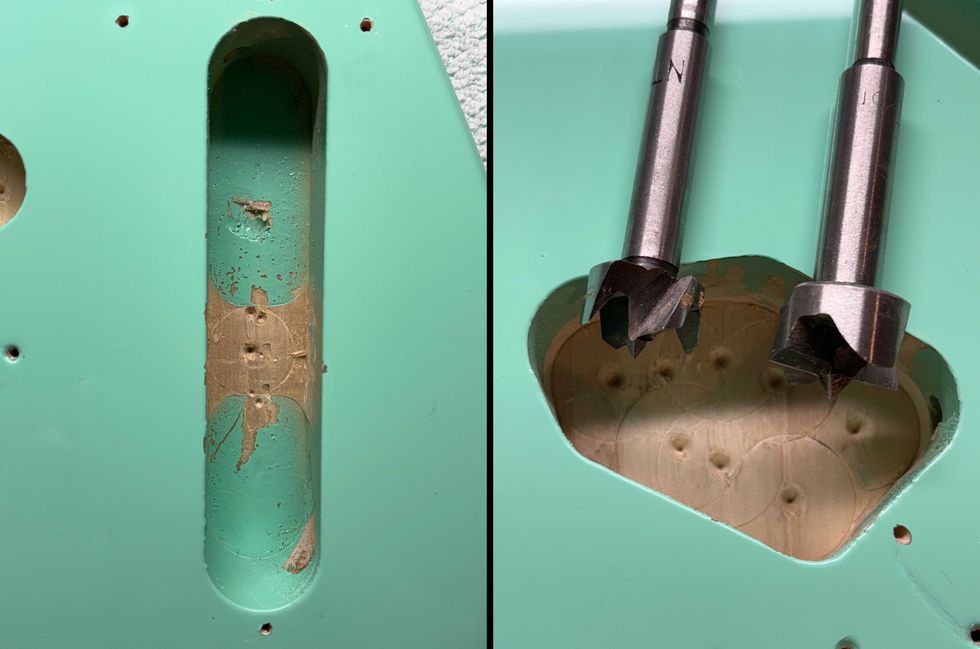One of the smallest parts of a guitar is also the most discussed one - the nut. The nut is the area where the strings hit the guitar first, which makes it very important. Nuts are made of a variety of materials and they all can influence your tone – for better or worse – so I think this important part of your guitar deserves a little discussion.
First and foremost, it’s important to know that the material of the nut only influences the tone of the open strings directly. With a good nut the open strings sound balanced and open, with unity gain compared to the other notes. Indirectly, the nut also influences the overall tone of a guitar because the nut transfers the vibrations of the strings to the neck, so the material and density are crucial.
With this in mind, it might seem appropriate that the material for a nut should be the same as the material used for the frets, which is how the “zero fret” came about. The “zero fret” is a normal fret where the nut should be, with an additional nut that simply guides the strings to the zero fret. The method was popular in the sixties, and some manufacturers still use it.
Guitars without a zero fret use a normal nut which still guides the strings, but is also partly responsible for the action of the guitar, the overall tuning stability and playing comfort. With some experience and the correct tools, like nut saws and files, making a nut is not very difficult. Generally, it’s best to let an experienced luthier do it for you, however, as there is little reason to spend money on the tools.
Nut materials are an oft-discussed topic, and everything from forensic physics to esoteric urban legends can be found on the internet to explain the differences. Here are my two cents, mostly based on the “try and listen” method of research.
 | Plastic Plastic nuts are the most common – even some higher-priced guitars have cheap plastic nuts. Plastic nuts are not very durable, and before too long, the strings will saw through the nut slots. Besides this, low-quality plastic nuts will kill your tone, especially your sustain. It is always a good idea to replace a plastic nut if you get a guitar that has one. Plus, the standard “rhinestone white” color of plastic nuts isn’t the sexiest look, and gives you just one more reason to replace it. |
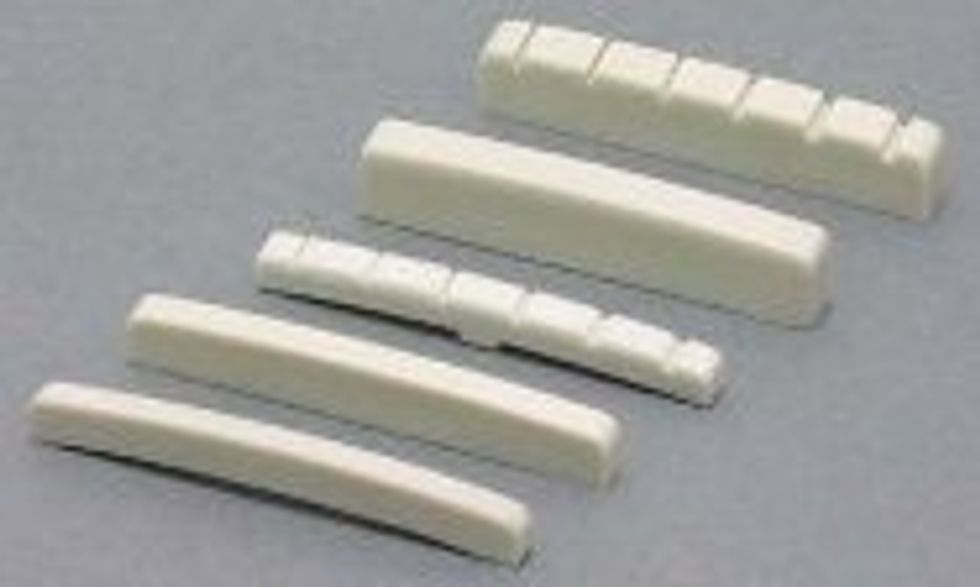 | "High-Tech" Plastic High-tech plastics are materials like TUSQ, Corian or Micarta. These are industrial materials with even, high density. They imitate natural bone in structure and color. The advantage of these materials is that they are artificial, offering the evenness of density without natural irregularities found in bone. These materials are used by a lot of companies, and I would recommend trying them. I can’t hear any differences when compared to a bone nut; I have a Micarta nut on my ’69 Fender “Pink Paisley” Tele, and I’m totally satisfied with it. Some luthiers claim that these materials are actually better than any bone nut – Martin has used Corian for some time. If it’s good enough for an expensive Martin guitar, it’s definitely worth checking out. |
 | Graphite Black in color, graphite is also very popular, especially for guitars with a tremolo. The biggest advantage to graphite is that it is “self lubricating” for low friction. A good graphite nut helps with tuning stability in combination with a tremolo. Cheap graphite nuts, however, tend to kill your sustain, so take care to get the good stuff. |
 | Brass/Metal Brass and metal were very popular during the eighties, and some companies still use brass today. It is the most durable, and will probably last forever, but it is heavy. Brass gives a very unique tone that you will have to try out to see if it is for you. The open strings can get very loud and shrill, but some heavy metal guys are into it because it helps the tone stay clear and defined when using heavy overdrive. |
 | Bone Bone remains the “king of nuts,” and is the historically correct material for vintage guitars. Nothing is as sexy as a polished bone nut on a one-piece maple neck! The tone is very balanced and the open strings are never too loud or shrill, and it will last a long time. It is important to use unbleached bone, because it naturally self-lubricates, which helps you stay in tune when using a tremolo. Plus, cosmetically, unbleached bone can be polished to a higher shine than bleached bone. I prefer unbleached camel bone. It is comparable to ivory in tone and appearance, and has a very even density. |
 | Fossil Ivory Ivory is said to be the premium material for guitar nuts, providing the best tone. However, the material is questionable from an ecological point of view, and buying ivory is risking that an elephant or walrus is being killed for it. The only acceptable way to get ivory is what is referred to as fossil ivory. Fossil ivory comes from animals that died naturally millions of years ago and has been found throughout the planet. To my ears, it sounds warmer, mellower and more defined than bone. The difference is very subtle, but still audible. Another bonus is the range of colors, from creamy white to yellowish to dark brown. When polished, it can be breathtaking. Fossil ivory is not cheap, so you’ll have to decide whether it is worth it for you. |
 | Ivory While real ivory offers a superb tone and appearance, I highly recommend not buying this stuff. It is forbidden in most parts of the world, but like most illicit substances, it is available through underground sources. As a matter of completeness I include ivory in this list, but I urge you not to buy or use it. Keep in mind, endangered animals will have to die for your tone. |
As you can see, there is a wide range of nut materials to choose from, and there is one out there for you. Personally, nothing beats the tone and charm of an unbleached camel bone nut for me. So go nuts, and we’ll see you next month.
Dirk Wacker has been addicted to all kinds of guitars since the age of 5 and is fascinated by anything that has something to do with old Fender guitars and amps. He hates short scales and Telecaster neck pickups, but loves twang. In his spare time he plays country, rockabilly, surf and Nashville styles in several bands, works as a studio musician and writes for several guitar mags. He is also a hardcore DIY guy for guitars, amps and stompboxes and also runs an extensive webpage singlecoil.com about these things.



















